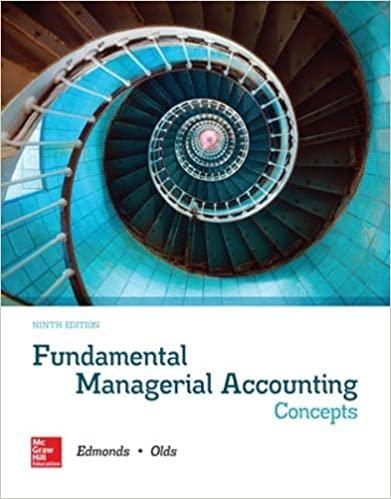Question
On each December 31, you plan to deposit $3,500 in a savings account. The account will earn 10 percent annual interest, which will be added
| On each December 31, you plan to deposit $3,500 in a savings account. The account will earn 10 percent annual interest, which will be added to the fund balance at year-end. The first deposit will be made December 31, 2011 (end of period). (UseTable 4) |
| Required: |
| 1. | Give the required journal entry on December 31, 2011.(Omit the "$" sign in your response.) |
| Date | General Journal | Debit | Credit |
| Dec. 31, 2011 | (Click to select)Interest revenueCashSavings accountAccounts payableAccounts receivableInterest payableInterest receivableNotes payable | ||
| (Click to select)Interest receivableInterest revenueNotes payableAccounts receivableInterest payableCashAccounts payableSavings account |
| 2. | What will be the balance in the savings account at the end of the 5th year (i.e., after 5 deposits)?(Round "FV Factors" to 4 decimal places and final answer to thenearest wholedollar amount.Omit the "$" sign in your response.) |
| Available amount | $ |
| 3. | What is the interest earned on the 5 deposits?(Round "FV Factors" to 4 decimal places. Round intermediate calculations and final answer to the nearest whole dollar amount. Omit the "$" sign in your response.) |
| Interest | $ |
| 4. | How much interest revenue did the fund earn in 2012 and2013?(Round your answers to the nearestwholedollar amount. Do not round intermediate calculations.Omit the "$" sign in your response.) |
| 2012 | 2013 | |
| Interest revenue | $ | $ |
| 5. | Give all required journal entries at the end of 2012 and 2013.(Round your answers to the nearestwholedollar amount. Omit the "$" sign in your response.) |
| Date | General Journal | Debit | Credit |
| Dec. 31, 2012 | (Click to select)Interest revenueInterest payableAccounts payableSavings accountCashAccounts receivableInterest receivableNotes payable | ||
| (Click to select)Interest receivableNotes payableAccounts receivableInterest payableSavings accountCashAccounts payableInterest revenue | |||
| (Click to select)Accounts payableAccounts receivableInterest payableNotes payableInterest revenueCashInterest receivableSavings account | |||
| Dec. 31, 2013 | (Click to select)CashInterest receivableAccounts receivableInterest revenueNotes payableAccounts payableSavings accountInterest payable | ||
| (Click to select)Interest receivableAccounts receivableAccounts payableInterest revenueSavings accountInterest payableNotes payableCash | |||
| (Click to select)Interest receivableInterest revenueNotes payableAccounts payableInterest payableCashSavings accountAccounts receivable | |||
|
Table 4 source:
http://lectures.mhhe.com/connect/0078111021/Tables/fvannuity.jpg
Step by Step Solution
There are 3 Steps involved in it
Step: 1

Get Instant Access to Expert-Tailored Solutions
See step-by-step solutions with expert insights and AI powered tools for academic success
Step: 2

Step: 3

Ace Your Homework with AI
Get the answers you need in no time with our AI-driven, step-by-step assistance
Get Started


